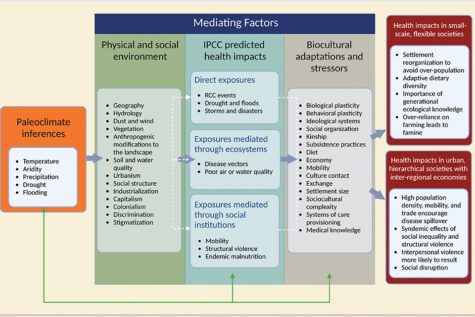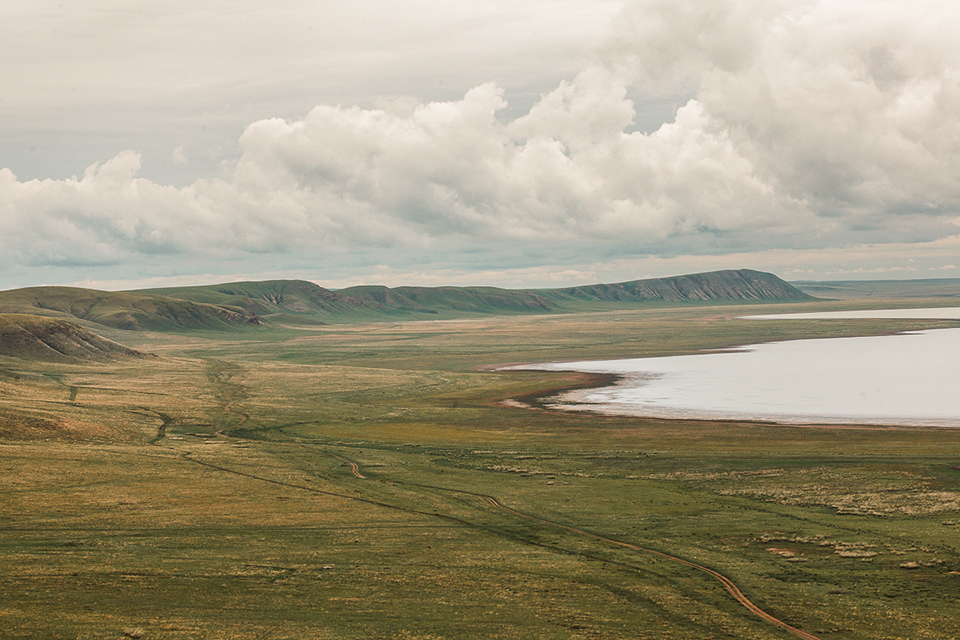What Happens During Rapid Climate Changes? What can we learn from History?
Climate Change, Epidemics and Human Resilience are the subjects of a new study carried out on the events in Eurasia during the so-called Neolithic Decline. The study comes at a time when archaeologists are debating what happened during this period as well as in the 4th to 6th centuries AD and the events leading up to the Little Ice Age.
Gwen Robbins Schug, Jane E. Buikstra, Sharon N. DeWitte, Brenda J. Baker, Elizabeth Berger, Michele R. Buzon, Anna M. Davies-Barrett, Lynne Goldstein, Anne L. Grauer, Lesley A. Gregoricka, Siân E. Halcrow, Kelly J. Knudson, Clark Spencer Larsen, Debra L. Martin , Kenneth C. Nystrom, Megan A. Perry, Charlotte A. Roberts, Ana Luisa Santos, Christopher M. Stojanowski, Jorge A. Suby, Daniel H. Temple, Tiffiny A. Tung, Melandri Vlok, Tatyana Watson-Glen, and Sonia R. Zakrzewski
In: PNAS (2023)

Climate change is an indisputable threat to human health, especially for societies already confronted with rising social inequality, political and economic uncertainty, and a cascade of concurrent environmental challenges.
Archaeological data about past climate and environment provide an important source of evidence about the potential challenges humans face and the long-term outcomes of alternative short-term adaptive strategies. Evidence from well-dated archaeological human skeletons and mummified remains speaks directly to patterns of human health over time through changing circumstances.
In a new paper published in PNAS, the authors explore the variation in human epidemiological patterns in the context of past rapid climate change (RCC) events and other periods of past environmental change. Case studies confirm that human communities responded to environmental changes in diverse ways depending on historical, sociocultural, and biological contingencies.
Certain factors, such as social inequality and disproportionate access to resources in large complex societies, seemed to feed the probability of major socio-political disruptions and reorganisations—commonly known as “collapses.”
In the paper, five distinct “collapses” are listed:
A. The Mesolithic Decline – ca. 6200 BC (the 8.2 KA BP event)
B. The Neolithic Decline – ca. 2500-2000 BC (the 4.2 KA BP event)
C. The Bronze Age Collapse – ca 1200 BC (the 3.2 KA BP event)
D. The Late Antique Little Ice Age – ca AD 330 – 600 (Lalia)
E. The Late Medieval Crisis – ca AD 1257 – 1500 (Little Ice Age)
All of these involved a mixture of “Rapid Climate Change” events – called RCC as well as serious epidemic events. Of these, at least three out of the five involved yersinia infections or plague (B, D, E), while The Bronze Age Collapse (C) seems to have involved other pathogens (tuberculosis and leprosy). However, several studies from the last decade also list major outbreaks of plague during the Bronze Age Collapse as significant for the events. Curiously enough, this is not mentioned in the present paper. However, the role of epidemics is considered, which is the main argument. This runs as follows.
The Neolithic Decline
In the article, the events believed to have caused the Aegean, Egyptian, Middle Eastern and Far Eastern collapses are said to have been caused by a climatic disruption of the South Asian Monsoon system followed by aeolian dust deposition in Africa and Asia. These climatic changes led to severe arid conditions – called a mega-draught in China, across the Eurasian Steppe, northern and central Africa, and most of west and central Europe. On the peripheries, vast areas were drenched by flooding, rain and colder weather. Ultimately, this led to widespread migratory movements and the new forms of societal organisations we call the Bronze Age.
The systematic studies of the interplay between these climatic events and the civilisational collapses explored in the paper show, for instance, how the complex urban Indus civilisation collapsed due to deceases such as leprosy and tuberculosis. “Indus cities were depopulated in the face of a combination of pressures from climate change, systematic structural inequality, and regional socioeconomic changes”, the authors write. And further: “It is notable that hierarchical urban societies built on strong interregional economic ties and marked social inequality experienced social disruption, disease spillover, and increased prevalence of interpersonal violence.” These events forged a different situation than that offered by the resilience of the heterarchical communities in some peripheries, which seemed to fare considerably better due to a more holistic form of resource management based on mixed economy, pastoralism, hunting, fishing and gathering.
Thus, this survey of Holocene human–environmental relations demonstrates how flexibility, variation, and maintenance of indigenous knowledge can be mitigating factors in the face of ecological challenges. Although the present climate change is more rapid and of a greater magnitude than the events and other environmental changes discussed here, “these lessons from the past provide clarity about potential priorities for equitable, sustainable development and the constraints of modernity which we must address”, conclude the authors.
